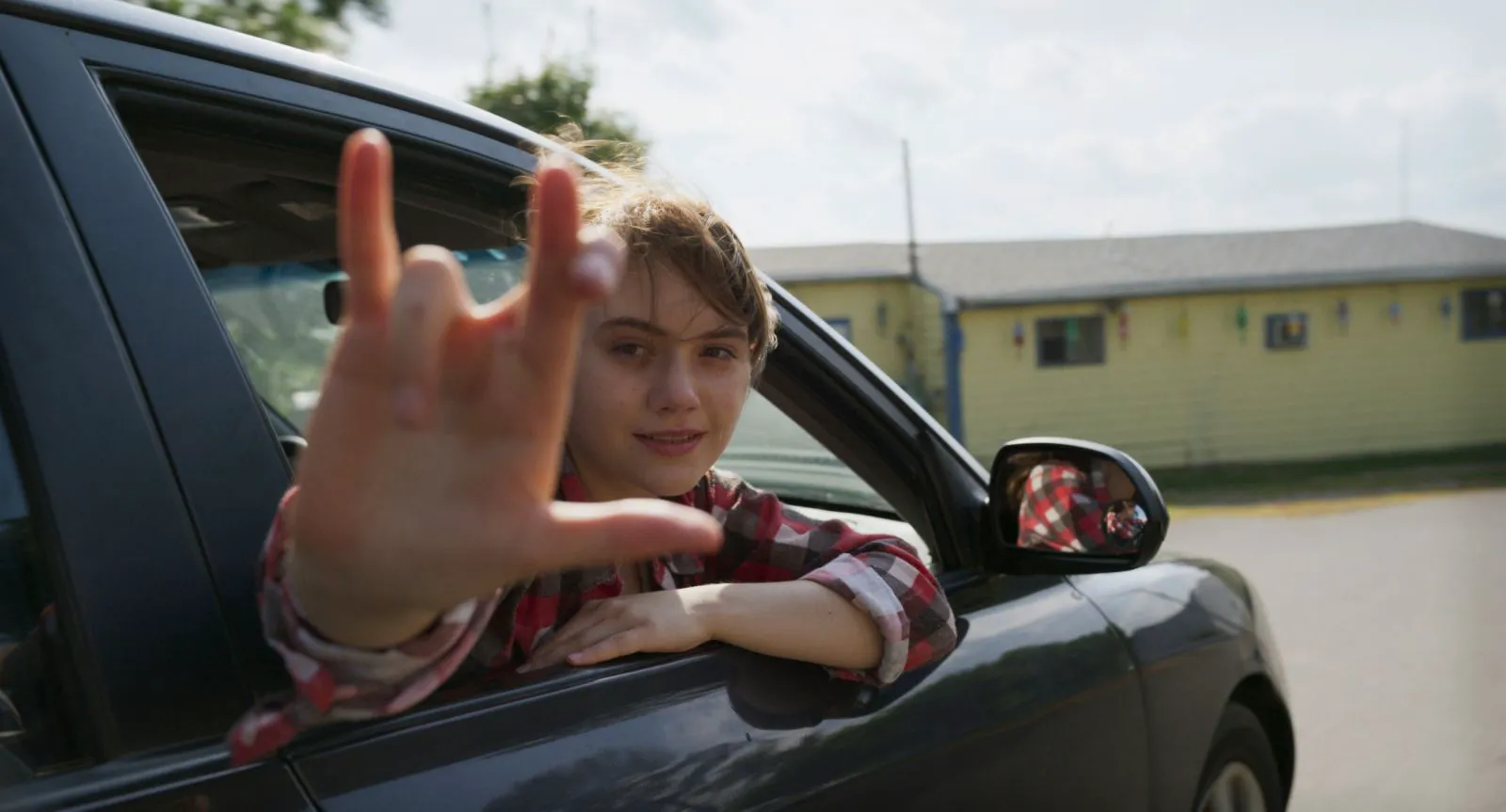Ruby’s Choice: Balancing Family and Dreams in “CODA”
In “CODA” (Child of Deaf Adults), we meet Ruby (Emilia Jones), a spirited 17-year-old who is, in many ways, the linchpin of her family. Unlike her parents and older brother, Ruby is hearing, making her the essential interpreter and bridge to the outside world for her deaf family of fishermen. Her life takes an unexpected turn when she joins the school choir. Her teacher, recognizing her raw talent, encourages her to consider a future in music, potentially at a prestigious Boston college. While the idea excites Ruby, her family needs her more than ever. Frustrated by the exploitative practices of fish buyers, her father and brother decide to launch their own fishing business, making Ruby’s assistance indispensable.

Emilia Jones in a scene from “CODA”
A Quiet Acquisition with a Powerful Message
Apple’s acquisition of “CODA” for a staggering $25 million after its Sundance Film Festival triumph was a landmark moment. Yet, the film’s release on the streaming platform has been surprisingly low-key. This seems like a strategic move for prestige, adding a Sundance Grand Jury Prize winner to their catalog, positioning them for awards season. However, “CODA” deserves more than just accolades; it needs an audience. It needs viewers who can relate to Ruby’s struggle between personal aspirations and familial duty, viewers who can empathize with a deaf family navigating a world that often overlooks them. It would be a disservice if such a heartfelt film were to remain unseen, its impact limited by its quiet release.

Emilia Jones in a scene from “CODA”
A Blend of Familiar Themes with a Unique Perspective
“CODA” embodies the quintessential Sundance film, weaving together several familiar narrative threads. It’s a coming-of-age story about a high schooler grappling with her identity and future, a teen romantic comedy with its share of heartbreak, and a family drama exploring complex dynamics and financial struggles. Crucially, it’s also a social commentary, offering representation for the deaf community and critiquing societal attitudes towards them.
Not all films manage to seamlessly blend genres, and “CODA” is no exception. The film shines brightest when it delves into the unique experiences of its deaf characters. For instance, the mother’s confession that she initially hoped Ruby would also be deaf, or the brother’s resentment towards his sister for disrupting their family dynamic, offer genuine insights into the family’s pain and complex emotions. These moments resonate far more deeply than the stereotypical scenes of Ruby being mocked for using sign language or her brother being insulted in a bar.
Finding Harmony in the Coda
However, when the film shifts its focus to Ruby’s life outside her family, it treads familiar ground. The narrative follows a predictable trajectory of a high schooler juggling her passion for singing and her romantic pursuits. We see the typical sports-drama arc with a demanding teacher and a triumphant final performance, and the classic high school romance where characters find not just love but also understanding. While these elements are well-executed and endearing, they lack the emotional depth and originality of the film’s portrayal of deaf culture.
The film’s Russian title, “CODA: Child of Deaf Parents,” highlights the central theme of identity. Just as Ruby struggles with her dual roles, the film itself grapples with which story to prioritize. It’s in the film’s coda, its final moments, that these contrasting elements converge. Ruby’s performance of Joni Mitchell’s “Both Sides Now” becomes a powerful expression of her identity, harmonizing her love for music with her commitment to her family. It’s a moving and beautifully crafted conclusion that makes it easy to forgive the film’s shortcomings.